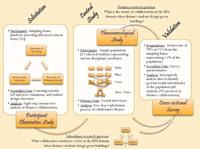Socially Responsible Collaborative Models for Green Building Design

In light of recent industry and societal developments, we submit that Boyer and Mitgang’s critical challenge facing architecture programs be revised to making connections with design curricula. We believe that connecting design curricula will have a professional downstream impact on the built environment. These future practitioners will be better equipped to collaborate during the conceptualization phase in an effort to minimize a building’s contribution to climate change. This paper describes the connections of twenty-three teams and nearly one hundred architecture and engineering students from the University of Nebraska-Lincoln, Montana State University, and the University of Wyoming. The students collaborated on a comprehensive architectural design problem for a Performing Arts Center. We performed a variant of the exploratory mixed methods research design to examine the nature of how students connected with other disciplines. The results indicate that groups either chose the more difficult and unknown journey of completing a single architectural design with their distance partners, or groups returned to their local comfort zones and developed separate design responses. This highlights the need for more collaborative experience in design programs. We articulate the collaborative attributes into hallmarks of best practice strategies to achieve higher levels of disciplinarity.


Add comment
Log in to post comments